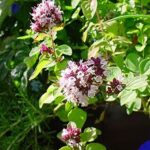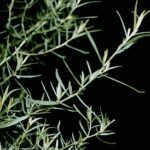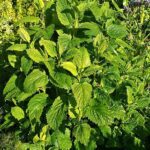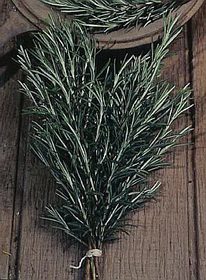Description
Young shoots and leaves are used as a seasoning for stuffings, soups, sausages, sauces, fish and lamb. The flowers have a milder flavor and are used as a flavoring. Both the leaves and flowers are great for teas.
$4.50 – $826.50
Young shoots and leaves are used as a seasoning for stuffings.
Seeds/ounce – 17,500
Pkt Weight – 1/168
Young shoots and leaves are used as a seasoning for stuffings, soups, sausages, sauces, fish and lamb. The flowers have a milder flavor and are used as a flavoring. Both the leaves and flowers are great for teas.
| Options | 1 lb, 1 oz, 1/4 lb, 1/4 oz, 1/8 oz, packet |
|---|

The leaves can be used in salads, or to make soup, and the roots can be eaten as a vegetable.
Seeds/ounce – 8,700
Pkt Weight – 1/128
I do not have an image for this product. If you buy and raise this product this year and send me an image of it, I will give you a free pack for next year. Send to” errolahlers@morgancountyseeds.com. Please include your name, address, and product name.
The leaves can be used in salads, or to make soup, and the roots can be eaten as a vegetable.
Seeds/ounce – 8,700
Pkt Weight – 1/128
I do not have an image for this product. If you buy and raise this product this year and send me an image of it, I will give you a free pack for next year. Send to” errolahlers@morgancountyseeds.com. Please include your name, address, and product name.

Beekeepers sometimes use lemon grass oil in swarm traps to attract swarms. Lemon grass oil has also been tested for its ability to repel the pestilent stable fly,[21] which bite domestic animals.
Seeds/ounce – 1,188,800
Pkt Weight – 1/16
Beekeepers sometimes use lemon grass oil in swarm traps to attract swarms. Lemon grass oil has also been tested for its ability to repel the pestilent stable fly,[21] which bite domestic animals.
Seeds/ounce – 1,188,800
Pkt Weight – 1/16

Greek oregano tends to be the most savory and earthy, while Italian is milder. Greek Oregano’s flavor is hot and peppery. Its spicy yet refreshing flavor contributes to Italian, Greek, and Spanish cuisine, as well as Mexican.
Oregano is a perennial growing to 20 inches, with pink flowers and spade-shaped, olive-green leaves.
Seeds/ounce – 125,100
Pkt Weight – 1/128
Greek oregano tends to be the most savory and earthy, while Italian is milder. Greek Oregano’s flavor is hot and peppery. Its spicy yet refreshing flavor contributes to Italian, Greek, and Spanish cuisine, as well as Mexican.
Oregano is a perennial growing to 20 inches, with pink flowers and spade-shaped, olive-green leaves.
Seeds/ounce – 125,100
Pkt Weight – 1/128

Tarragon (Artemisia dracunculus), also known as estragon, is a species of perennial herb in the sunflower family. It is widespread in the wild across much of Eurasia and North America, and is cultivated for culinary and medicinal purposes.[3][4][5][6]
From Wikipedia, the free encyclopedia
Approximately 150,000 per ounce Pkt about 800
Tarragon (Artemisia dracunculus), also known as estragon, is a species of perennial herb in the sunflower family. It is widespread in the wild across much of Eurasia and North America, and is cultivated for culinary and medicinal purposes.[3][4][5][6]
From Wikipedia, the free encyclopedia
Approximately 150,000 per ounce Pkt about 800

The leaves are used as a herb, in teas and also as a flavouring. The plant is used to attract bees for honey production. It is grown as an ornamental plant and for its oil (to use in perfumery). Lemon balm has been cultivated at least since the 16th century.
Lemon balm seeds require light and a minimum temperature of 20 °C (68 °F) to germinate. The plant grows in clumps and spreads vegetatively (a new plant can grow from a fragment of the parent plant), as well as by seed. In mild temperate zones, the plant stems die off at the start of the winter, but shoot up again in spring. Lemon balm grows vigorously.
The leaves are used as a herb, in teas and also as a flavouring. The plant is used to attract bees for honey production. It is grown as an ornamental plant and for its oil (to use in perfumery). Lemon balm has been cultivated at least since the 16th century.
Lemon balm seeds require light and a minimum temperature of 20 °C (68 °F) to germinate. The plant grows in clumps and spreads vegetatively (a new plant can grow from a fragment of the parent plant), as well as by seed. In mild temperate zones, the plant stems die off at the start of the winter, but shoot up again in spring. Lemon balm grows vigorously.




Reviews
There are no reviews yet.